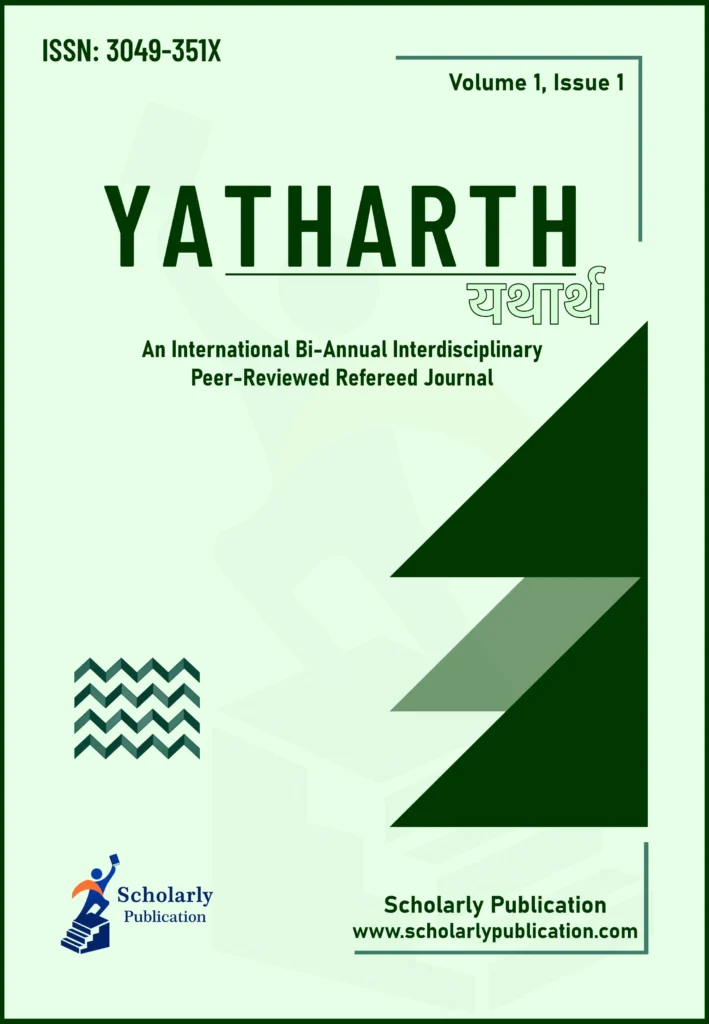The Art and Symbolism of Adornment: Women’s Connection to Jewellery Across Eras
Volume 1, Issue 1, Article Number: 251007 (2025)
Home >> Yatharth >> Volume 1, Issue 1
Dr. Swati Phophalia1,* | Neha Brhambhatt2
1Sr. Assistant Professor, IIS (Deemed to be University), Jaipur, Rajasthan, India
2QC Associate, City of Hope, Beckman Research Institute, California USA
*Corresponding Author: swatiphophalia@gmail.com
Received: 31 January 2025 | Revised: 09 February 2025
Accepted: 10 February 2025 | Published Online: 18 February 2025
DOI: https://doi.org/10.5281/zenodo.15106757
© 2025 The Authors, under a Creative Commons license, Published by Scholarly Publication
Abstract
Jewellery is a form of personal expression for women, ranging from simple ornamentation to a sign of identity, strength, and spirituality. Jewellery has historically fulfilled a variety of purposes. It was initially made of natural materials, such as feathers, shells, bones, and stones. After the discovery of metals, gold, silver, platinum, and copper were used to craft jewellery. jewellery functioned both as decoration and as a symbol of status, signifying wealth and financial stability. In modern times, women wear jewellery not only to enhance their appearance but also to challenge societal norms and express their identities. Today’s women wear jewellery not only to display their beauty but also to question social standards and confirm their identities. The paper tries to explore the relationship of women with jewellery throughout history. This study emphasizes the importance of jewellery in Indian culture, including its presence in traditional ceremonies and alleged health benefits.
Keywords
Jewellery, Indian culture, Women
References
- Barnard, N. (2008). Indian Jewellery. Timeless Books. ISBN-10: 8189497138
- Cronk, L., & Dunham, B. (2007). Amounts spent on engagement rings reflect aspects of male and female mate quality. Human Nature, 18, 329-333.
[View Article] [Google Scholar]
- Fram, E. H., & Baron, R. (2004). Are natural diamond engagement rings forever? International Journal of Retail & Distribution Management, 32, 340-345.
[View Article] [Google Scholar]
- Krishnan, U. R. B., & Kumar, M. S. (1999). Dance of the Peacock: Jewellery Traditions of India. India Book House.
- Raha, S. (2020). Body and jewellery: Reflection on Ghurye’s perspective. Social Trends, 7, 225-231.
[View Article] [Google Scholar]
- Untracht, O. (1997). Traditional Jewellery of India. Thames and Hudson, U.K.
Cite This Article
S. Phophalia and N. Brhambhatt, “The Art and Symbolism of Adornment: Women’s Connection to Jewellery Across Eras,” Yatharth 1(1) (2025) 251007. https://doi.org/10.5281/zenodo.15106757
Rights & Permission
This is an open access article published under the Creative Commons Attribution (CC BY) International License, which allows unrestricted use, distribution, and reproduction in any medium, provided the original work is properly cited. No permission is needed to reuse this content under the terms of the license.
For uses not covered above, please contact the Scholarly Publication Rights Department.

